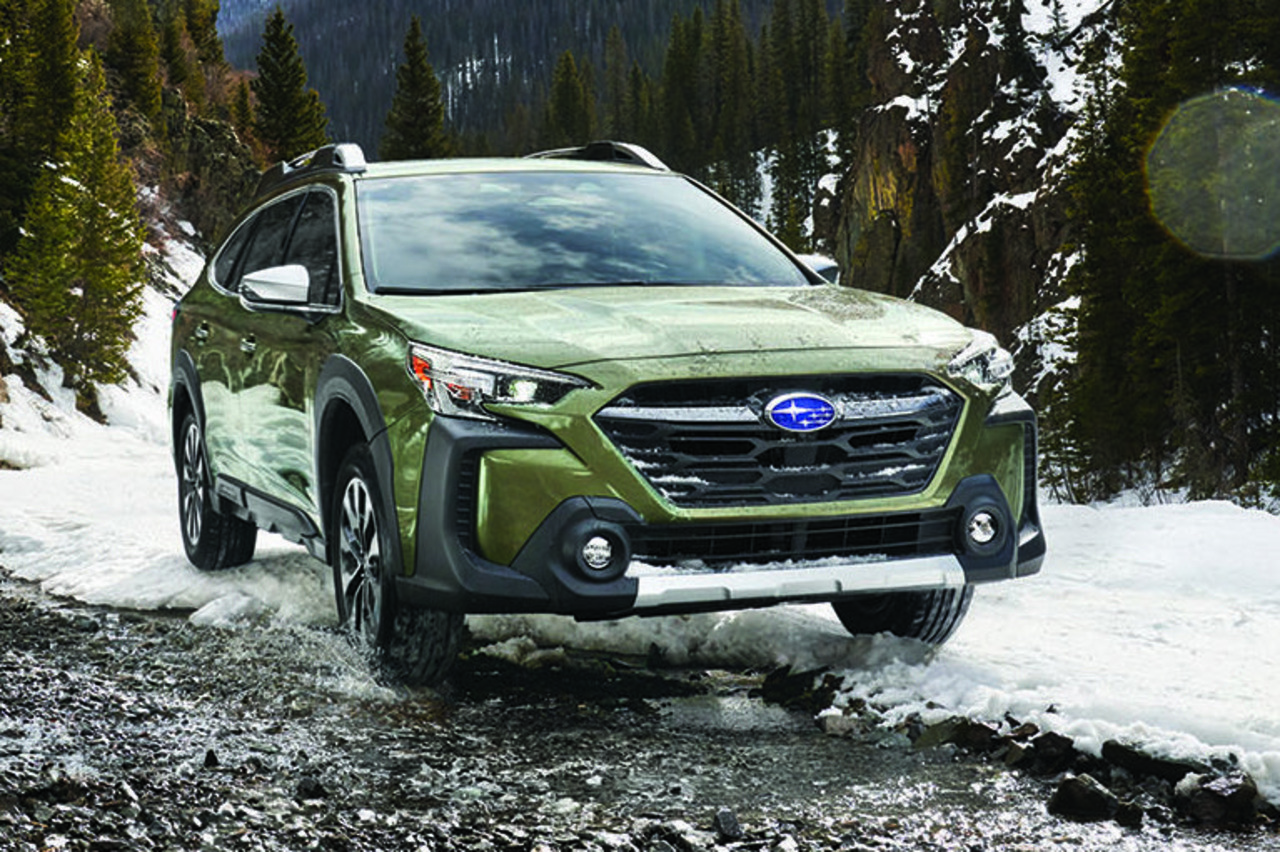Lane-keeping assist systems, often referred to as lane centering or lane departure prevention systems, have become increasingly common in modern vehicles.
Designed to improve road safety and reduce driver fatigue, these systems use cameras and sensors to detect lane markings and apply gentle steering corrections to help keep the vehicle centered.
In theory, they are a valuable tool for highway driving, especially on long trips or during brief lapses in attention. However, not all implementations of lane assist technology are created equal.
While many vehicles offer well-calibrated, subtle corrections, others tend to overreact, overcorrect, or even cause discomfort by making abrupt steering inputs. In some models, the system may intervene too frequently or too aggressively, creating a tug-of-war between the driver and the car.
This can lead to unintended swerving, lane weaving, or a feeling that the driver is constantly fighting the steering wheel. These experiences can quickly turn what should be a helpful safety feature into a frustrating and counterproductive one.
This article examines 10 vehicles equipped with factory-installed lane assist systems that are known for overcorrecting frequently explore real-world feedback, road test data, and expert reviews to highlight the specific shortcomings in each vehicle’s lane-keeping technology.
The goal is not to dismiss these vehicles entirely, but to provide a balanced and informed look. Whether due to overly sensitive sensors, inconsistent calibration, or software quirks, these systems can detract from the driving experience instead of enhancing it.
We’ll explore real-world feedback, road test data, and expert reviews to highlight the specific shortcomings in each vehicle’s lane-keeping technology.
10 Vehicles With Factory Lane Assist That Overcorrects Frequently
The goal is not to dismiss these vehicles entirely, but to provide a balanced and informed look at how their lane assist systems behave — and to help potential buyers understand what they might be dealing with if they rely heavily on these semi-autonomous features.
Let’s dive into the list, beginning with the vehicles whose lane assist systems could use a bit more refinement.
Also Read: 5 Cars With Built-In Wi-Fi That’s Fast and 5 That’s Pointless
1. 2023 Toyota RAV4
The 2023 Toyota RAV4 is one of the most popular compact SUVs on the market, celebrated for its reliability, fuel efficiency, and practical interior.
However, when it comes to its factory-installed lane assist system — known as Lane Tracing Assist (LTA) — many drivers and reviewers have raised concerns about overcorrection and inconsistency, especially during real-world driving scenarios.
Lane Tracing Assist is designed to keep the RAV4 centered within its lane by using a combination of cameras and radar. When activated, the system works alongside adaptive cruise control to help reduce the burden on the driver during long highway trips.
In theory, it should gently guide the vehicle back toward the center of the lane when it begins to drift. In practice, however, the system often reacts too aggressively.
Drivers have reported that the RAV4’s LTA makes abrupt or exaggerated steering corrections even with minor deviations, particularly on roads with faded or curved lane markings.
On highways with construction zones or inconsistent paint lines, the system may apply sudden inputs that feel unnatural or jerky.
These corrections can be jarring, especially when the driver is already steering appropriately. Instead of feeling assisted, many users describe the sensation as being “wrestled” by the wheel.

Adding to the frustration, the RAV4’s system is very sensitive to road quality. On narrower lanes or in inclement weather, the system may disengage frequently or misinterpret the boundaries, only to re-engage unexpectedly with a sharp correction.
Some users end up turning the feature off altogether, preferring manual control over the uncertainty of being oversteered.
While Toyota has implemented safety features with good intentions, the overly eager intervention of the RAV4’s LTA detracts from an otherwise well-rounded driving experience.
The system’s design errs on the side of caution, but the result is a hyperactive assistant that can frustrate more than it helps. For drivers who value smooth and consistent semi-autonomous driving, this is one area where the RAV4 may not live up to expectations.
2. 2022 Honda Civic
The 2022 Honda Civic received major praise for its redesign, modernized cabin, and refined driving dynamics.
However, when it comes to its factory lane assist system — part of the Honda Sensing suite — some drivers have expressed concerns about its tendency to overcorrect, especially on winding roads or during normal lane positioning maneuvers.
The system, known as Lane Keeping Assist System (LKAS), uses a forward-facing camera to detect lane lines and provide steering input to keep the Civic centered. While the idea is to reduce fatigue and promote safer driving, the reality is often more irritating than supportive.
Many users have reported that LKAS intervenes when it isn’t necessary, such as during minor lane drifting or slight steering inputs to avoid road imperfections.
What makes LKAS particularly frustrating in the Civic is its overconfidence in maintaining perfect centering, even when it misinterprets the lane markings.

When this happens, the system may abruptly steer the car away from the perceived edge of the lane, even if the vehicle was safely positioned. On tighter curves or hilly terrain, the system’s corrections can feel unnatural and disrupt the driver’s control rather than enhancing it.
One common complaint is the Civic’s tendency to “ping-pong” within the lane — a behavior where the car constantly drifts toward one side and then sharply corrects to the other.
Rather than maintaining a smooth line, the car ends up zigzagging slightly within the lane, leading to discomfort and a feeling of instability. This can be particularly distracting for attentive drivers who already have their hands firmly on the wheel.
The overcorrection issue is exacerbated on poorly maintained roads or where lane lines are faded. In these scenarios, LKAS may become erratic — oscillating between not detecting the lane at all and suddenly applying forceful steering when markings are momentarily visible.
While the feature can be disabled, it defaults to “on” in many Civic trims each time the car is restarted, forcing drivers to manually deactivate it every time.
Despite Honda’s reputation for technology integration, the 2022 Civic’s lane assist system is one area where refinement is still needed. For those who prioritize a smoother and more predictable driver-assist experience, this feature may become more of a hassle than a help.
3. 2023 Subaru Outback
Subaru is well-known for its commitment to safety, and the 2023 Outback continues this legacy with its standard EyeSight Driver Assist Technology. This suite includes adaptive cruise control, pre-collision braking, and lane centering features.
However, while the EyeSight system excels in many areas, its lane keep assist and lane centering functionalities have been criticized for frequent overcorrection and jittery steering behavior.
Subaru’s implementation of lane centering works by using dual color cameras mounted near the rearview mirror to identify lane markings and keep the vehicle centered. On paper, this sounds like a helpful aid, especially for long highway drives.
In practice, however, the system can be too aggressive in its response. On roads with gentle curves or less-than-perfect lane markings, the Outback’s steering inputs may feel abrupt or unnatural.
Drivers have reported a persistent “nudging” sensation from the wheel, even when the vehicle is properly aligned. These steering corrections can sometimes occur multiple times within a few seconds, causing a sense of wobbling or weaving within the lane.
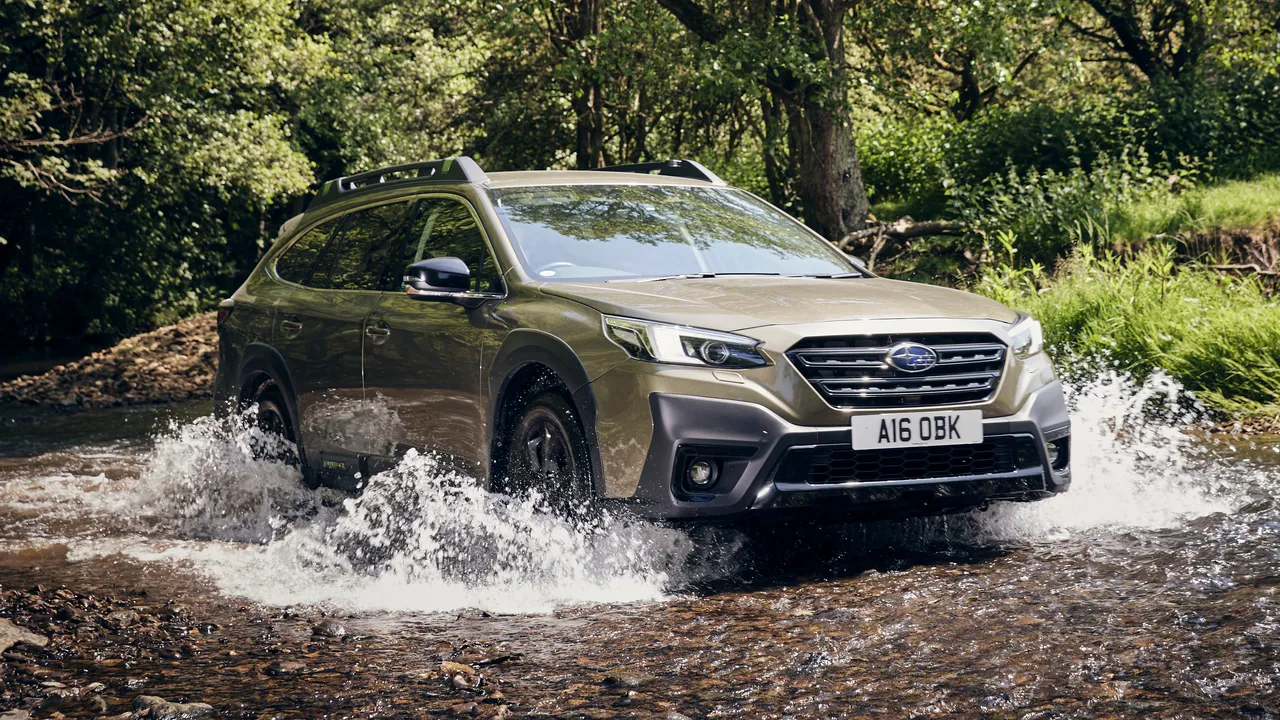
In particular, on two-lane rural highways or mountain roads — where markings may be faded or inconsistent — the system can become disoriented and apply corrections at inopportune times.
Adding to the challenge, the EyeSight system occasionally attempts to override driver intentions.
For example, if the driver gently drifts to one side to avoid debris or give more space to a nearby cyclist, the lane keep system may misinterpret this as unintentional drift and steer the vehicle back toward the center — creating a moment of conflict between driver input and system logic.
These “fights” for control can undermine driver confidence, particularly for those new to the technology.
Moreover, EyeSight’s sensitivity tends to fluctuate based on light conditions and road quality. In bright sunlight or heavy rain, the system may struggle to interpret markings, disengaging sporadically and then reengaging with an unexpected and sharp correction.
While the Outback remains one of the safest and most versatile crossovers in its class, its lane assist system may not offer the seamless, cooperative driving experience some competitors provide.
Subaru enthusiasts who value its rugged all-weather capabilities might find the overzealous lane centering to be a small but noticeable annoyance — one that could benefit from software fine-tuning in future updates.
4. 2023 Hyundai Tucson
The 2023 Hyundai Tucson is a stylish and tech-forward compact SUV that offers a wide range of driver-assistance features as part of Hyundai’s SmartSense safety suite.
Among these features is Lane Following Assist (LFA) — a system designed to keep the Tucson centered in its lane during highway driving.
While the feature showcases Hyundai’s push toward semi-autonomous driving, it has drawn criticism for being too assertive, often overcorrecting when subtle guidance would suffice.
LFA uses front-facing cameras and sensors to track lane markings and make real-time steering adjustments. In ideal conditions — on smooth highways with clearly visible lines — it performs adequately.
However, many drivers have reported that the Tucson’s system tends to apply abrupt steering inputs even for small deviations.
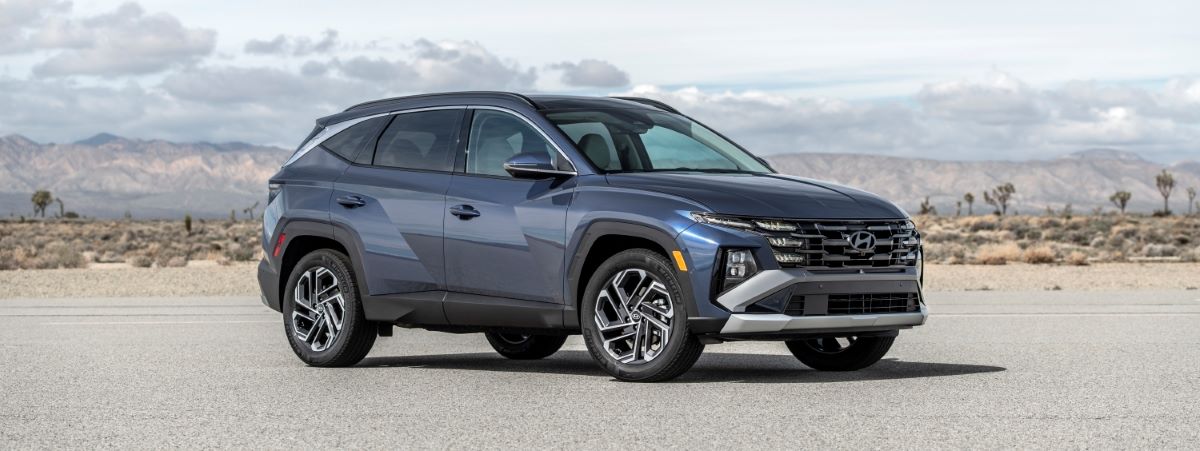
These overcorrections can make the wheel feel like it’s constantly twitching or fighting the driver’s natural adjustments, leading to an unsettled driving experience.
One of the most frequently mentioned issues with the Tucson’s lane assist system is its lack of nuance. Instead of offering a gentle, progressive steering nudge, it often swings the wheel in one direction with noticeable force, only to make another correction moments later.
This creates a “ping-pong” sensation, where the car bounces between the lane markings instead of maintaining a smooth, centered path.
The system’s reaction can be particularly problematic on winding roads or during lane merges where markings may briefly disappear. In such cases, LFA can become confused, either disengaging unexpectedly or overcorrecting when it reacquires the lane lines.
Some drivers find themselves turning the feature off due to the stress it adds rather than the help it provides.
Additionally, the Tucson resets its driver-assist settings with each engine restart, meaning the lane assist system reactivates automatically unless manually disabled again — a small but persistent annoyance for drivers who prefer to drive without it.
While the 2023 Hyundai Tucson excels in offering a comfortable ride, bold styling, and advanced infotainment, its overzealous lane assist system detracts from the otherwise modern driving experience.
For a vehicle that presents itself as cutting-edge, this feature feels under-refined, showing that even the most advanced cars still have areas for improvement.
5. 2022 Ford Escape
The 2022 Ford Escape continues to be a popular choice among compact SUV buyers due to its versatile cabin, peppy engine options, and a robust list of safety features.
Included in its Co-Pilot360 Assist+ package is a Lane-Keeping System that combines both Lane-Keeping Aid and Lane Departure Warning.
While Ford’s efforts to improve highway safety are commendable, the Escape’s lane assist system has gained a reputation for frequent overcorrection and intrusive steering behavior.
Ford’s Lane-Keeping Aid works by using a forward-facing camera to track road markings and apply steering torque to guide the vehicle back to the center of the lane. On paper, this seems like a useful and supportive feature.
However, drivers and testers alike have reported that the system often reacts too harshly to what are otherwise safe and normal driving behaviors — such as slight lane adjustments or hugging one side of a lane on narrow roads.
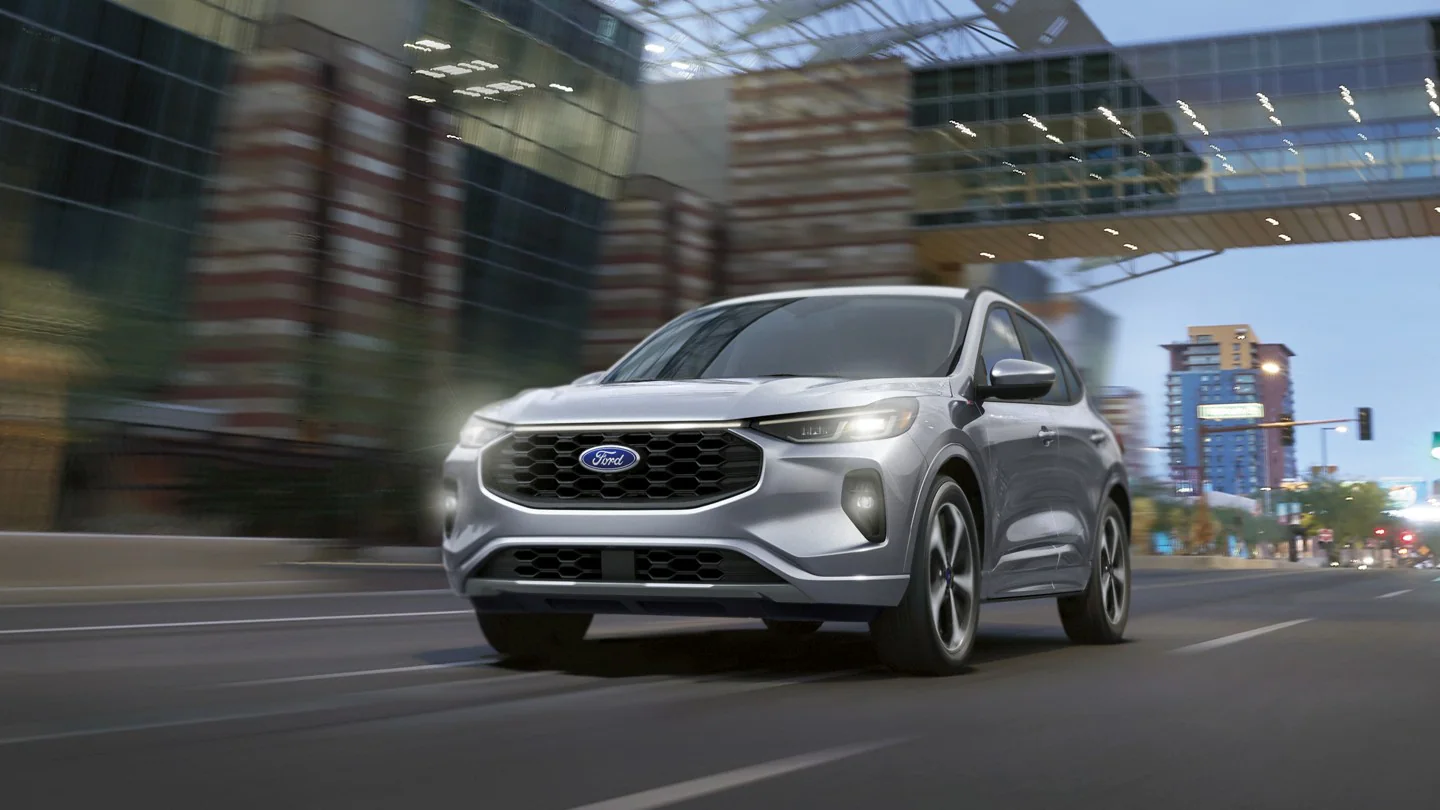
In many cases, the Escape will initiate a sharp correction even when the vehicle is well within the lines, as if it is overcompensating for a drift that hasn’t actually occurred. This can result in a disconcerting “snapping” sensation at the wheel, breaking the flow of smooth driving.
On curved highways, the system’s steering corrections are sometimes delayed or too aggressive, leading to a back-and-forth wobble as the Escape attempts to re-center itself repeatedly.
Another common complaint is the Escape’s sensitivity to worn or lightly painted lane lines. If the markings are not pristine, the system may struggle to track them accurately, yet it still attempts to correct course when it regains a partial reading. This creates inconsistent behavior that can be more distracting than helpful.
Furthermore, while the system can be turned off, it is enabled by default upon each restart. Drivers who find the system more of a hindrance than a help must disable it every time they get behind the wheel, which can quickly become tedious.
While the 2022 Ford Escape offers many modern features and strong overall value, its Lane-Keeping System demonstrates that even the most well-intentioned safety technology can become a source of frustration if not carefully tuned.
In this case, the system’s tendency to overcorrect detracts from what should otherwise be a confident and comfortable ride.
6. 2023 Nissan Rogue
The 2023 Nissan Rogue has positioned itself as one of the most refined and family-friendly compact crossovers on the market. With upscale interior features, solid fuel economy, and an array of safety technologies, it makes a strong impression in a crowded segment.
One of its key safety features is ProPILOT Assist, which includes lane centering and adaptive cruise control.
While this semi-autonomous system is praised for innovation, many drivers have noted that the lane assist portion can be overly aggressive and frequently overcorrects, especially on less-than-ideal road surfaces.
ProPILOT Assist aims to reduce driver stress by helping keep the vehicle centered in its lane and maintaining a safe following distance from the car ahead. However, the Rogue’s system often seems hypersensitive to minor deviations.
Even small, intentional steering movements — such as shifting slightly to one side of a lane to avoid a pothole — can trigger a noticeable counter-correction from the vehicle, resulting in a steering tug that feels more forceful than supportive.
This issue becomes even more pronounced in real-world conditions where lane markings aren’t freshly painted or where the road surface curves frequently.
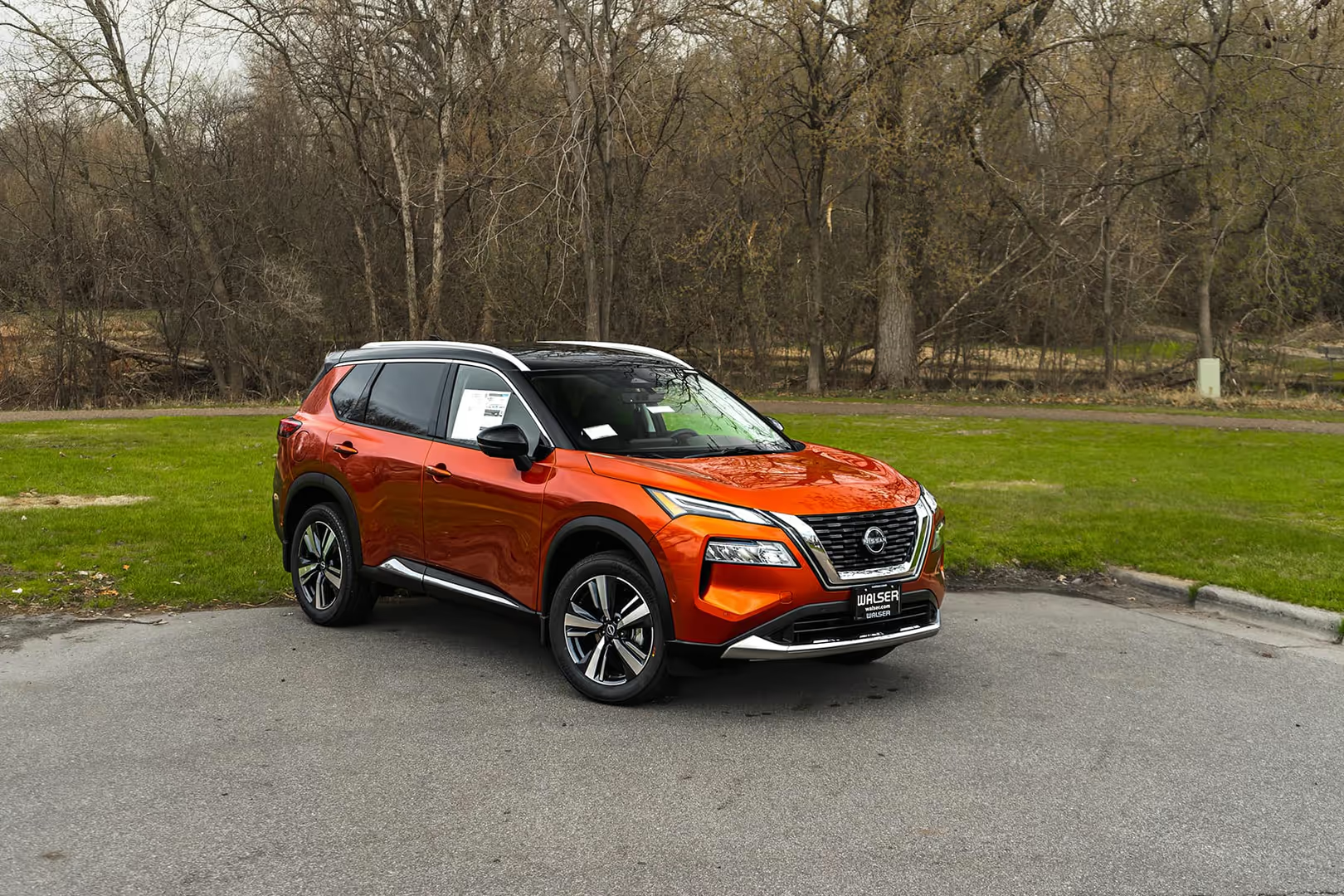
Drivers report a “jerky” sensation as the system tries to maintain perfect centering, which often results in a back-and-forth motion within the lane. Instead of feeling like the car is gliding along confidently, it feels as though the steering is in constant micro-correction mode.
Another frustration comes from how frequently ProPILOT Assist disengages and reengages. When it loses track of the lines temporarily — due to rain, snow, or poor visibility — it may drop out without warning, only to reactivate suddenly with a sharp steering adjustment when it reacquires the lane.
These abrupt transitions can startle drivers who have their hands on the wheel but weren’t expecting the system to reassert control.
While Nissan has made strides in making its safety technology more accessible and user-friendly, the lane assist component of ProPILOT Assist still feels unpolished in the 2023 Rogue.
Its tendency to overcorrect not only creates discomfort but can also erode trust in what is supposed to be a confidence-boosting feature. For those who want smoother semi-autonomous support, this system may leave something to be desired.
7. 2023 Chevrolet Equinox
The 2023 Chevrolet Equinox is a compact SUV that appeals to a broad range of buyers thanks to its affordability, practicality, and user-friendly technology.
Included in its suite of safety features is Lane Keep Assist with Lane Departure Warning, which is standard on most trims.
While this system is designed to enhance driver safety by gently steering the vehicle back into its lane, many Equinox drivers have experienced a different reality — one where the system overreacts and makes overly assertive steering corrections.
Chevrolet’s Lane Keep Assist operates using a forward-facing camera to monitor lane lines and detect unintended drifting. When such drift is detected, it delivers a brief corrective steering input. In theory, these inputs should be subtle and supportive.

However, in practice, the system can be jarring and too sensitive. Drivers often describe the sensation as a sudden “snap” of the wheel, even if the vehicle is merely nudging toward the edge of a lane — not fully departing from it.
This overcorrection becomes particularly troublesome on winding roads or during light maneuvering, where the vehicle’s slight lateral movements are normal.
The system sometimes fails to distinguish between intentional steering and potential lane departure, triggering unnecessary and uncomfortable corrections. Instead of fostering trust and safety, this unpredictability leads many drivers to become annoyed or even disable the feature altogether.
Additionally, the Equinox’s system struggles with poorly marked roads. When lane lines are faded or inconsistent — especially in rural areas or construction zones — the system’s behavior becomes erratic.
It may ignore true lane drifts but then overcompensate when it regains partial markings. The inconsistency leads to a jerky driving experience that can feel more like interference than assistance.
Another issue is that the feature resets each time the vehicle is started, requiring drivers to go through menus to deactivate it repeatedly. This adds a layer of frustration for those who find the system more disruptive than helpful.
Overall, while the 2023 Equinox remains a competent and appealing crossover in many respects, its lane assist technology lags behind competitors in refinement. For drivers expecting a polished and subtle semi-autonomous experience, this system may deliver more stress than safety.
8. 2023 Kia Sportage
The 2023 Kia Sportage is a bold redesign that pushes the compact SUV into more premium territory, offering upscale styling, a spacious interior, and an impressive suite of driver-assist features.
Among these is Lane Following Assist (LFA), which is designed to keep the vehicle centered in its lane during highway driving.
While Kia’s system is generally well-integrated and technologically advanced, the Sportage’s LFA has been criticized by some users for being too reactive and prone to overcorrection.
LFA works by using camera-based lane detection and steering inputs to help the driver stay centered. It’s supposed to reduce fatigue on long trips and increase safety, especially when paired with adaptive cruise control.

However, in practice, it can feel overly intrusive. Drivers have reported that the system will often jerk the steering wheel suddenly even when the vehicle is only slightly off-center — or worse, when it’s already well-positioned in the lane.
This behavior becomes especially noticeable on curvy roads, where the system doesn’t always anticipate the path of the road as well as a human driver would.
Instead of flowing naturally through a bend, the Sportage might lag slightly in its corrections, then abruptly steer to compensate.
The result can be a back-and-forth tug that disrupts the smoothness of the ride and forces the driver to override the system more often than they’d like.
The system can also be disoriented by poor lane markings or temporary changes in lane boundaries, such as those found in construction zones.
In these cases, LFA may misread the environment and apply corrections inappropriately — pulling the vehicle too close to one side or centering it within an unclear space. When this happens, the system’s “help” becomes a source of confusion or even risk.
Another complaint is the lack of gradation in the steering input. Rather than applying soft, progressive adjustments, the Sportage’s lane assist often reacts with a binary on/off-style correction that feels robotic rather than fluid.
Though it’s meant to enhance safety, many users find themselves turning the system off because of its overly assertive behavior.
Overall, while the 2023 Kia Sportage excels in technology and comfort, its Lane Following Assist would benefit from more refinement and calibration.
For a vehicle that otherwise offers a very composed and user-friendly experience, this overly eager feature stands out as an area needing improvement.
9. 2023 Mazda CX-5
The 2023 Mazda CX-5 continues to be a standout in the compact SUV segment due to its engaging driving dynamics, refined interior, and overall premium feel.
While Mazda prioritizes driver involvement and intuitive control, its Lane Keep Assist System (LKAS)—standard in most trims—doesn’t always align with that philosophy.
In fact, the CX-5’s lane assist feature has drawn criticism for being overzealous and occasionally disruptive, particularly when navigating imperfect or winding roads.
Mazda’s system uses a forward-facing camera to detect lane markings and apply steering assistance if it determines the vehicle is unintentionally departing from its lane.
However, many drivers report that LKAS intervenes even during normal steering behavior, misjudging slight position changes or subtle maneuvers as unintentional drifts.
This sensitivity leads to abrupt and sometimes excessive corrections, which can feel unnatural and contrary to Mazda’s usual driving fluidity.
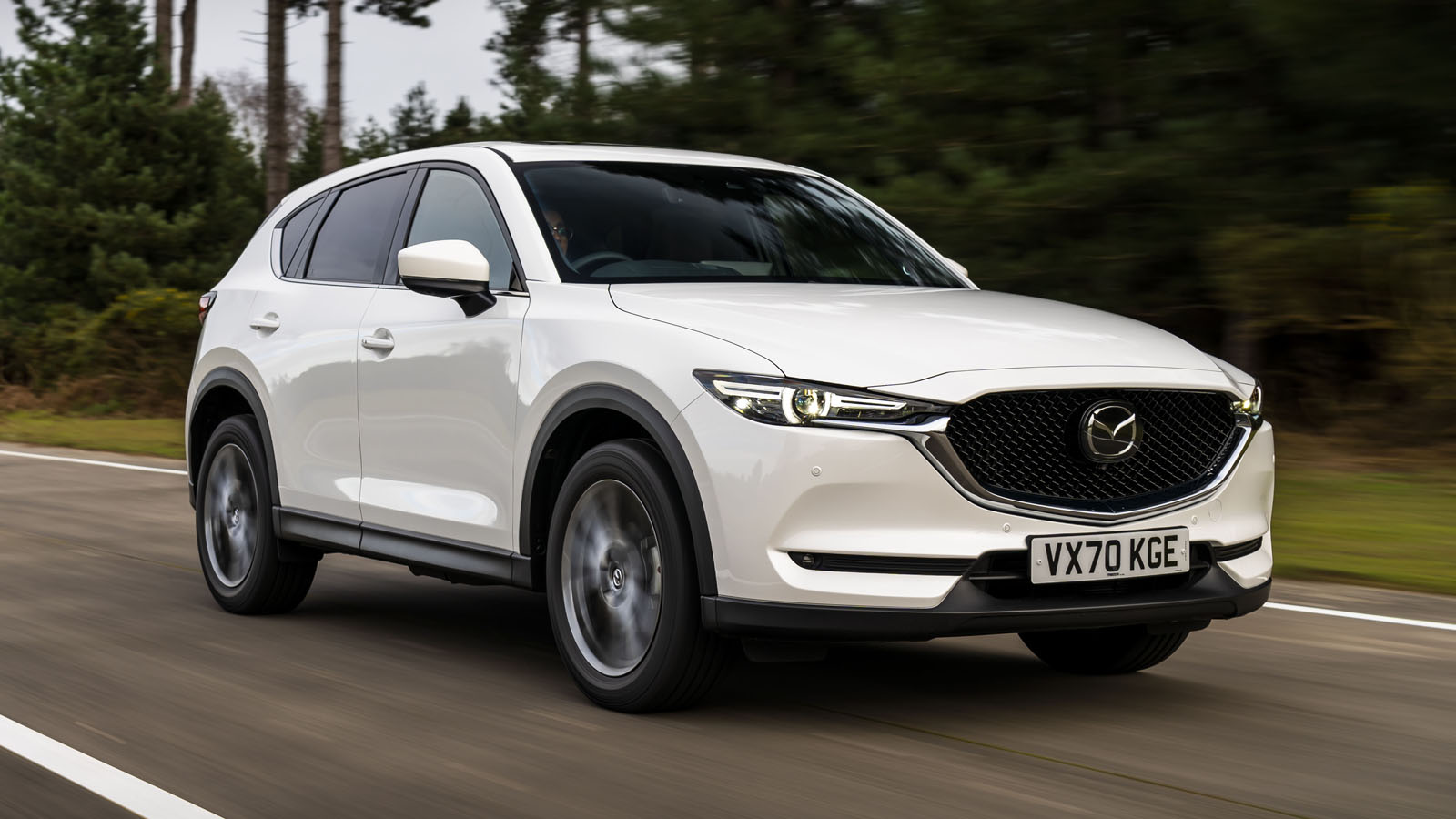
For instance, when taking a highway curve or edging slightly within the lane to avoid a rough patch or debris, the system may suddenly tug the steering wheel back toward center, creating an awkward back-and-forth motion.
These unexpected tugs can erode the sense of control and engagement that CX-5 drivers typically value.
Adding to the issue is the system’s inconsistency. On roads with worn, faded, or partially missing lane markings, the LKAS can become erratic—sometimes failing to intervene when it should and then overcorrecting when markings reappear.
This unpredictability creates more distraction than reassurance, especially in urban or rural environments where lane clarity is often compromised.
Moreover, the system resets itself upon each ignition cycle, so drivers who prefer to disable it must do so manually every time they start the vehicle.
While Mazda offers a generally straightforward menu system, this extra step becomes an ongoing inconvenience for those who find the system unhelpful.
In a vehicle that otherwise excels at delivering a confident and driver-focused experience, the CX-5’s lane assist system feels like an outlier. Rather than enhancing safety in a subtle, cooperative manner, it tends to intrude on the driving process—something Mazda’s core audience may find counterintuitive.
While the 2023 Mazda CX-5 remains a top pick for its performance and polish, its lane assist feature is a reminder that even driver-oriented brands can struggle with implementing semi-autonomous technologies in a truly seamless way.
10. 2023 Volkswagen Tiguan
The 2023 Volkswagen Tiguan is a versatile compact SUV that blends European sophistication with American practicality.
It offers a comfortable ride, a spacious third-row option, and a suite of advanced driver-assistance features, including Lane Assist, part of Volkswagen’s IQ.Drive package.
However, while Lane Assist aims to improve safety by helping drivers stay centered in their lanes, many Tiguan drivers have found the system to be overactive and prone to unnecessary corrections, especially in everyday driving conditions.
Volkswagen’s Lane Assist works by detecting road markings and gently adjusting steering to prevent unintentional lane departure. Yet in real-world use, the Tiguan’s system often goes beyond a gentle nudge.
Drivers have noted that it can make strong steering inputs even during minor or fully intentional movements — such as positioning closer to one side of a lane or maneuvering around road obstacles.
This aggressive response creates a feeling of resistance at the wheel, as though the vehicle is constantly second-guessing the driver’s intent. The wheel may pull back toward the center unexpectedly, leading to a tug-of-war dynamic that can be unsettling.

On winding roads or highway curves, this results in a choppy driving experience where the vehicle oscillates back and forth within the lane rather than maintaining a smooth trajectory.
Additionally, the Tiguan’s Lane Assist system tends to misfire on poorly marked roads or during inclement weather.
Rather than gracefully disengaging when lines become unclear, it sometimes attempts to correct without fully understanding the environment, increasing the risk of sudden or erratic steering behavior. This can be distracting, particularly in construction zones or older roadways where markings are inconsistent.
Compounding the frustration is the fact that the system reactivates every time the vehicle is restarted. Drivers who prefer a more manual driving experience must remember to turn it off each time they get in the car.
While this is a common trait among many lane assist systems, the Tiguan’s particularly assertive behavior makes this auto-reactivation more irksome than usual.
Despite the Tiguan’s strong showing in comfort, technology, and value, its Lane Assist implementation feels somewhat rushed and under-refined.
For a brand known for precision engineering and balanced driving dynamics, this overcorrecting behavior is at odds with Volkswagen’s typical smoothness.
Drivers looking for a hands-on, confident ride may find themselves battling a system that’s supposed to be their silent co-pilot.
Also Read: 15 Cars With Too Many Touchscreen Controls for Simple Tasks

